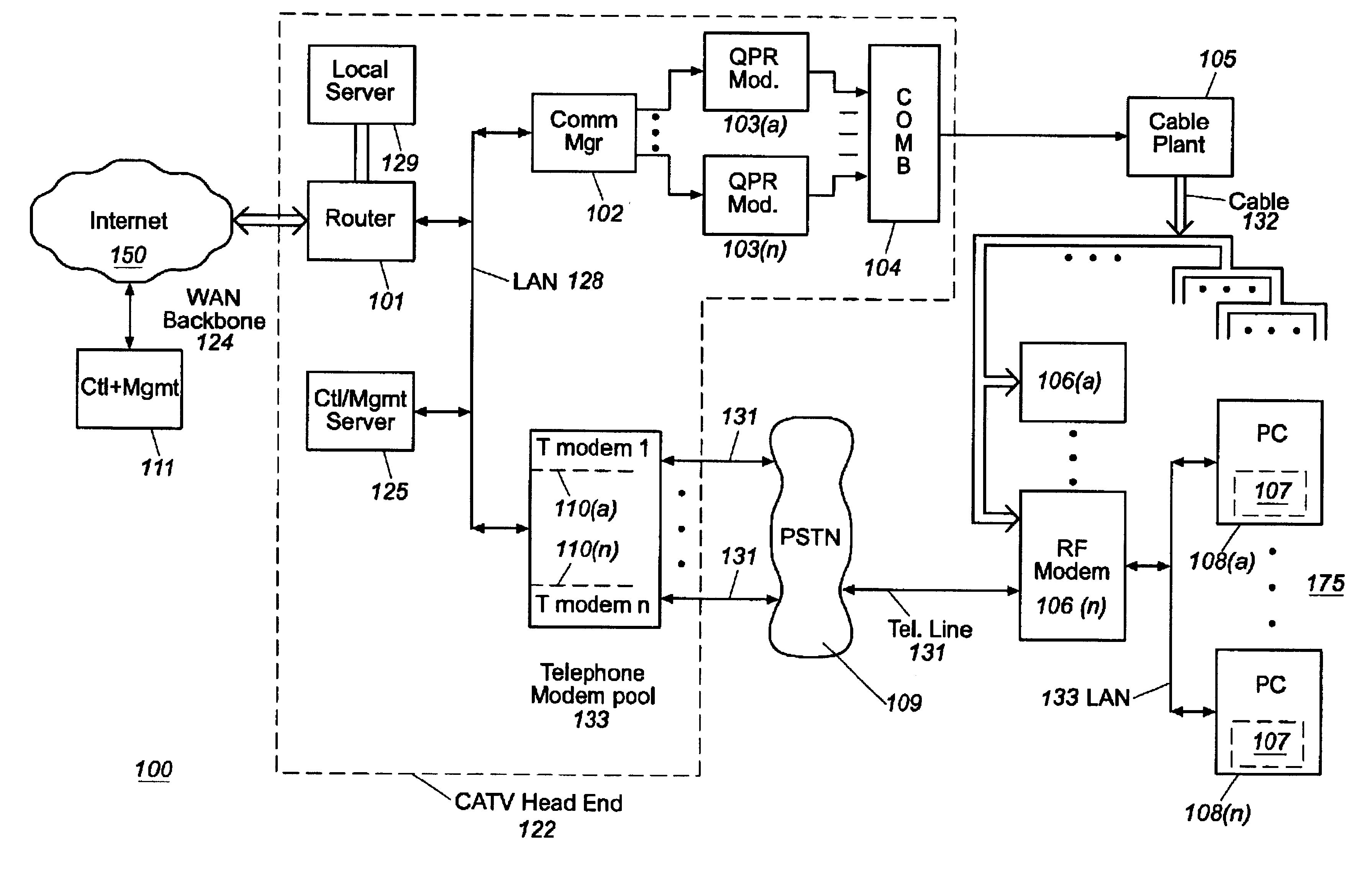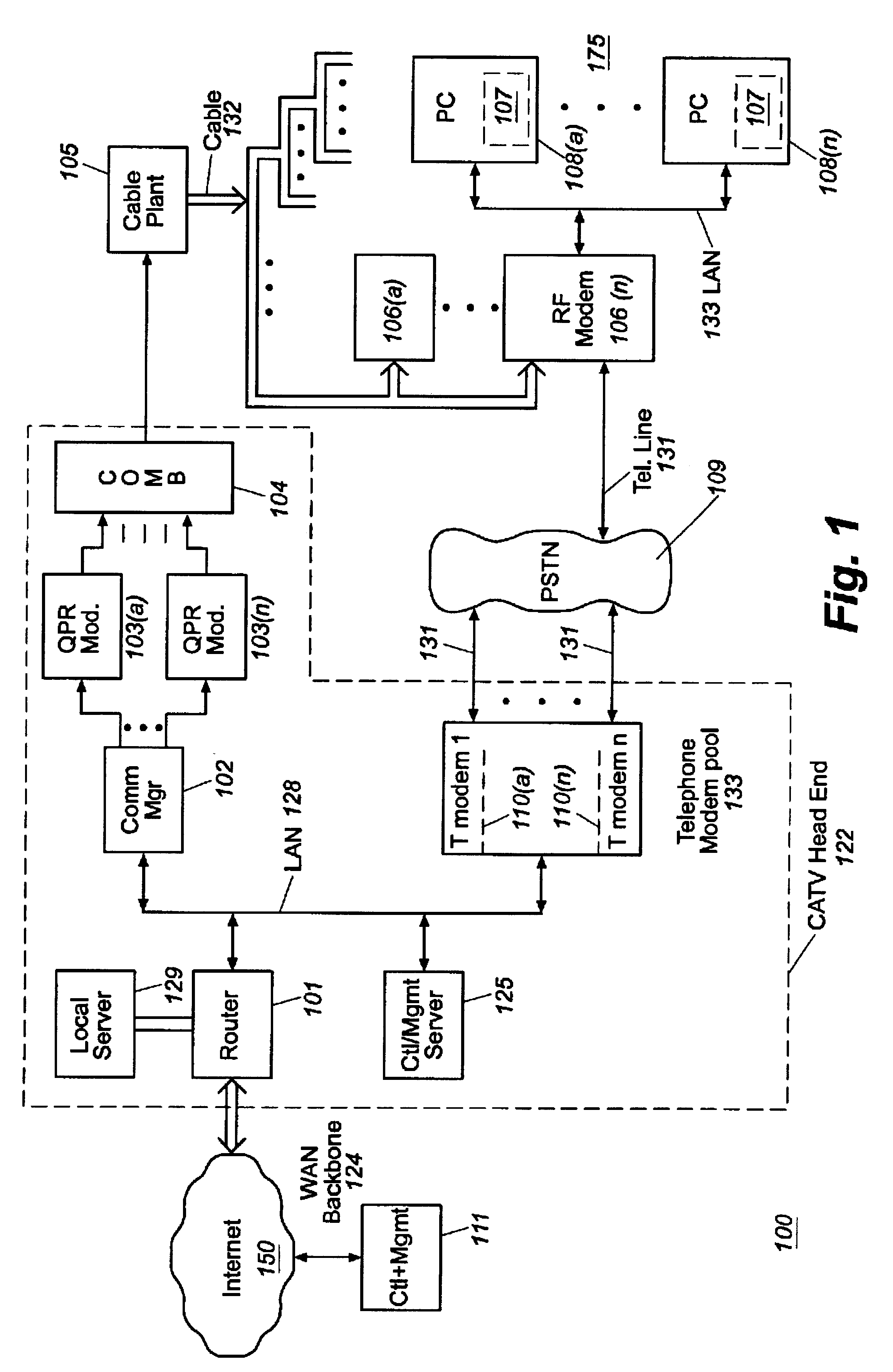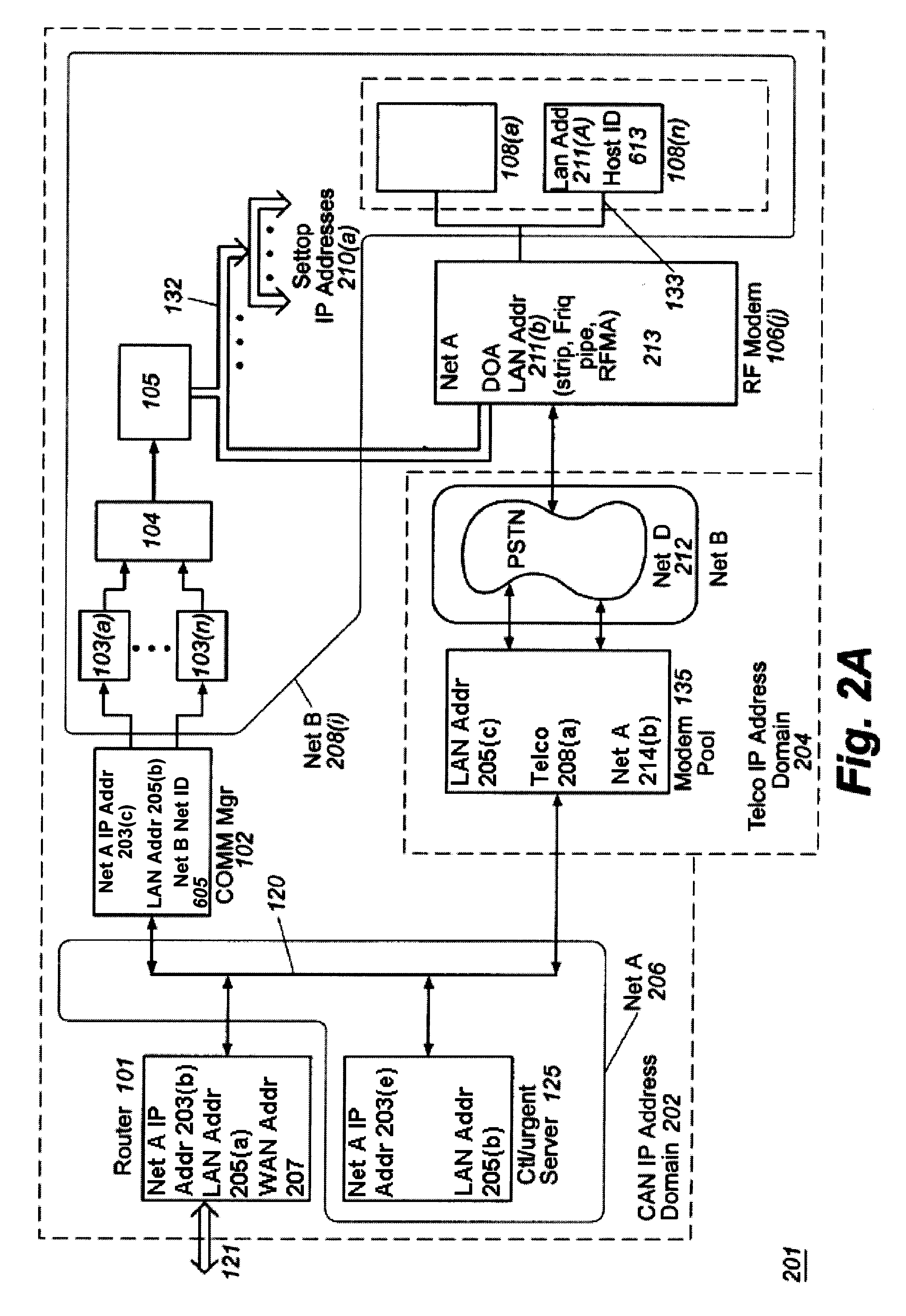Usage statistics collection for a cable data delivery system
a data delivery system and usage statistics technology, applied in the field of collection of usage statistics data, can solve the problems of not being able to provide high speed service to subscribers
- Summary
- Abstract
- Description
- Claims
- Application Information
AI Technical Summary
Problems solved by technology
Method used
Image
Examples
Embodiment Construction
will begin with an overview of Internet protocol (IP) packets (data grams) and of the IP addressing architecture employed in the cable data network of FIGS. 1 and 2 and will then describe the physical components of the cable data network. First FIG. 3 will be described showing the interrelationship between data grams and Ethernet frames used to carry them. Then, the QPR modulator baseband data structure will be described with reference to FIG. 4. The major components of the cable data network of FIGS. 1 or 2 to be discussed in connection with the present invention are the cable modem 106 (FIG. 5) and the network control and management server 111, 125 (FIGS. 6-12). Components bearing reference numerals introduced in FIG. 1 are identified similarly in subsequent figures.
Internet Protocol Packets (data grams): FIG. 3
FIG. 3 shows those parts of an Internet protocol (IP) packet or datagram 301 that are required to understand the following discussion of how components of the cable data ne...
PUM
 Login to View More
Login to View More Abstract
Description
Claims
Application Information
 Login to View More
Login to View More - R&D
- Intellectual Property
- Life Sciences
- Materials
- Tech Scout
- Unparalleled Data Quality
- Higher Quality Content
- 60% Fewer Hallucinations
Browse by: Latest US Patents, China's latest patents, Technical Efficacy Thesaurus, Application Domain, Technology Topic, Popular Technical Reports.
© 2025 PatSnap. All rights reserved.Legal|Privacy policy|Modern Slavery Act Transparency Statement|Sitemap|About US| Contact US: help@patsnap.com



